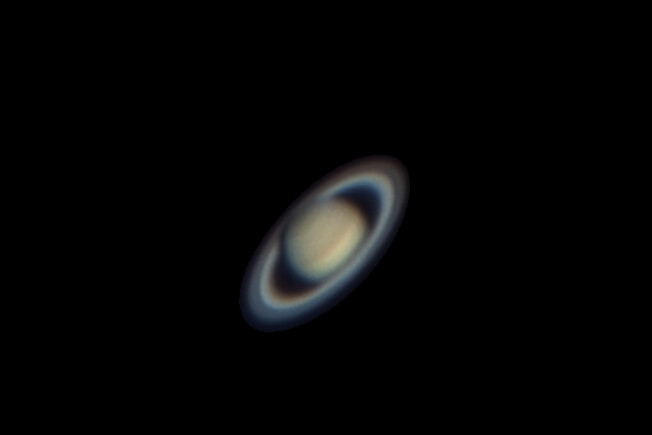Here's an Unusual October Challenge: Name a Moon!

The sky is endless, and our universe is ever growing. While science has already told us our universe is infinitely expanding, what science teaches us doesn't just expand with the universe, but instead often stays contained to our own galaxy, and its constantly multiplying layers and intricacies. Evidence of this? On October 7th, a team of scientists headed by Carnegie's Scott S. Sheppard discovered 20 more moons orbiting Saturn. Previously, Jupiter was known for having the most moons of any planet, with 79 different moons orbiting it. Saturn has now taken over this record, claiming a whopping total of 82 moons as its own.
Saturn & Dione (slightly updated). Image Credit: Ugordan/Creative Commons
What do we care, though? There are new discoveries in space often, so why is this so particularly exciting? Well... Peacock Plume is committed to bringing only the best, most compelling news to your screen. So, have no fear, there is more to the story.
Last July, Sheppard discovered five of Jupiter's moons and had a naming competition for those five moons. The competition gained a lot of attention, and the enthusiasm the project generated has inspired Sheppard to have a similar competition with these 20 new moons.
New moon alert. Source: Youtube
Here are the rules:
When?
The naming competition opened with the announcement of the discovery on October 7 and is set to close on December 6, giving all competitors plenty of time to ponder and wonder over what names, exactly, should be submitted.
What?
There are some rules to what names can be submitted. Two of the new discoveries are moons that belong to a group of outlying moons called the "Inuit Group." In the spirit of the group's mythology-based namesake, all submitted names for these two moons must be the names of Giants from Inuit Mythology. Seventeen of the new moons can be located with the "Norse Group," and are retrograde moons. All attempts to name any of these moons must be based upon the ancient names of Norse Giants to be considered as valid. The final moon is considered to be part of the Gallic Group, though it's the furthest moon from Saturn and is rather isolated from the rest of the Gallic moons. True to the nature of the competition, this moon's name must be that of a Gallic Giant.
How?
Thankfully, submitting for this competition has been made incredibly easy. All you have to do is tweet @SaturnLunacy with the hashtag "#NameSaturnsMoons," giving your name suggestion and the why behind the name. Photos, artwork, and videos are strongly encouraged to help draw attention to your chosen names especially.
@SaturnLunacy #NameSaturnsMoons
My daughter Alyssa has a #NameSaturnsMoons suggestion: Ops! pic.twitter.com/dGPvoufejE— Laura Brady (@CharmedRacer) October 23, 2019
Some Quick, Helpful Hints:
More information regarding the naming of moons can be found here, and here is a source that allows you to check other moon names, to make sure your suggested name hasn't already been claimed by another moon. Double-naming moons is a big no-no in the realm of space.
There's nothing to lose. Take the jump, and submit a name! Who knows? Perhaps you'll be able to immortalize your existence in the universe by being the one to name a newly discovered moon. Wouldn't that be an enticing story to share over the holidays? Best of luck, folks!








